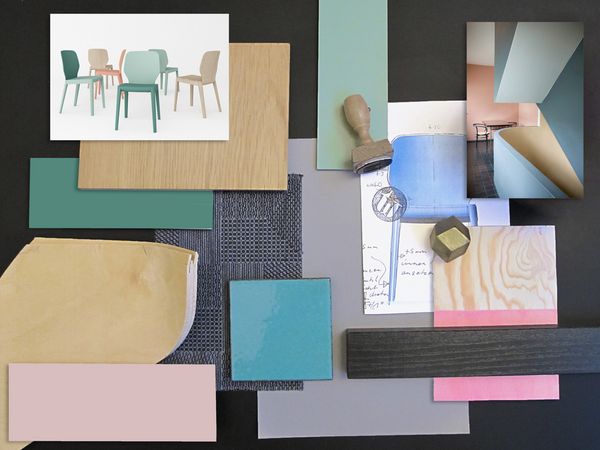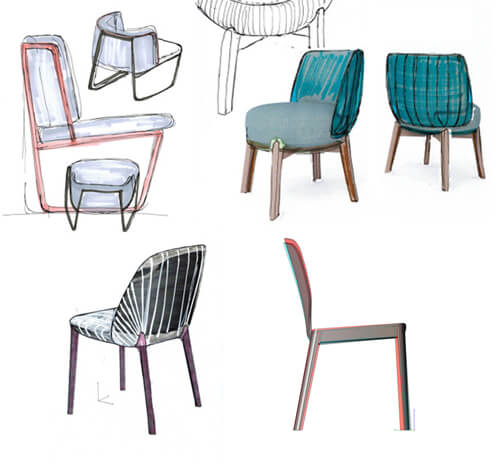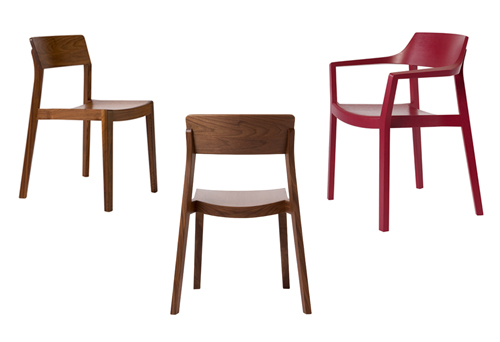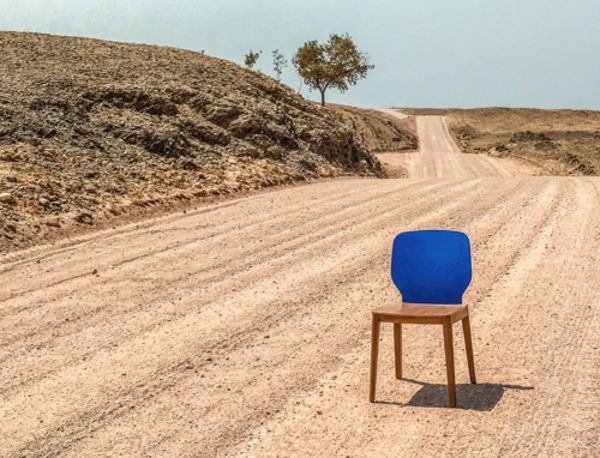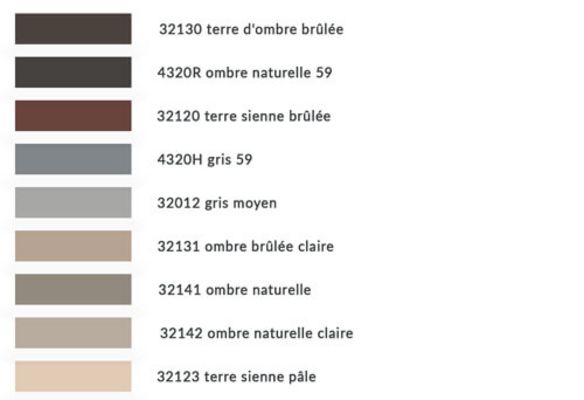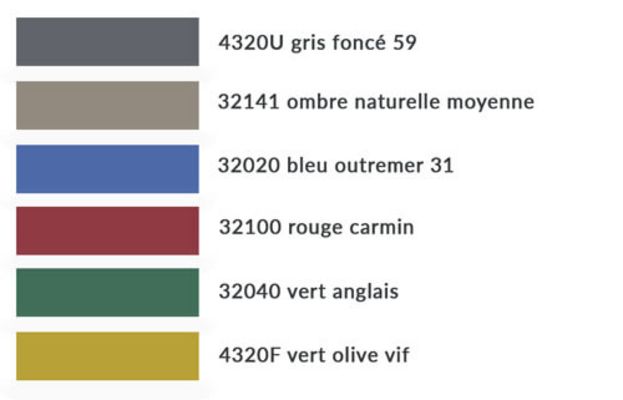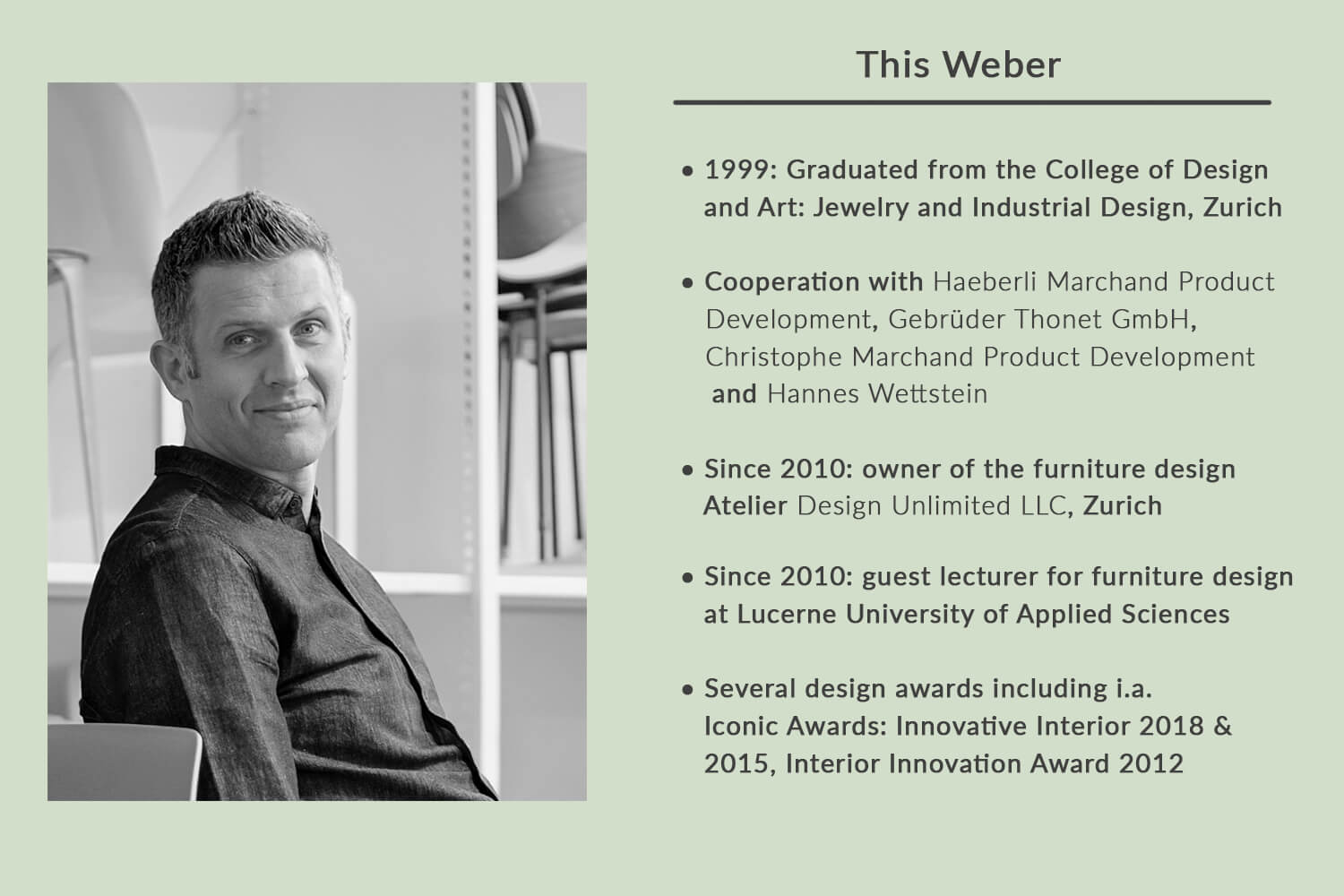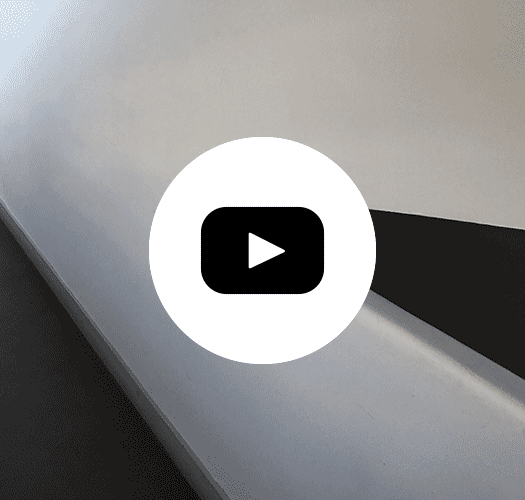Between form and function - development of a chair design
Creating a chair that meets all demands of functional and aesthetic quality is always a great challenge for the designer. But what are form and function about and what's the path of design development? The Swiss furniture designer This Weber describes the idea and design process using the example of a chair.
The renowned Swiss designer This Weber and his Zurich studio, Design Unlimited LLC, have developed successful products for international manufacturers and received design awards and distinctions for several projects in the recent years. "The main thing about design is that every draft should have its own specific characteristics to fit into different room concepts, such as a fully upholstered armchair placed in a large dining room which should be stackable." Only if a design is based on a fundamental idea, the basic requirement for the model is fulfilled. Last but not least, it's also about emotions, because the piece of furniture should convince you directly: "The chair should look comfortable and make you want to sit down before you even sit in. High-quality design is more than just a beautiful look, it's also about genuine and comprehensible added value. A guarantee of functional, technical and aesthetic quality. A design object is intended to arouse a great deal of covetousness among users."
Creation of a chair design
This Weber explains how the development process of a chair is based on a customer request: "After the briefing, I do an extensive research about the company: what is its philosophy and values, who are the customers and what does the competition propose? So, you are looking for a connection between the company and the new product to be developed. I discuss the project with the manufacturers to explore our limits or if there are preferences regarding the choice of wood. Beech is often the most suitable because it is very elastic and tough. In a higher price category is the also elastic and resistant ash, which looks like oak after staining. Oak, on the other hand, is very beautiful, but not as elastic as beech wood."
Then comes the time for creative thinking because, after all, chairs are much more than just a place to sit - you can define, divide and complement the room concept. With a smile he admits that already existing principles are analysed and reinterpreted sometimes. For all product developments, Weber and his team are looking for the most beautiful and cost-reduced detail solution. Now sketches are made and 3D renderings are created. Sometimes Weber presents his designs as 3D-printed models or, if the essence of the design permits it, even simple cardboard models. Already given materials, colours and combinations are already tested in the early stage of the project and presented with the respective designs.
"Of course, one thinks about the colour of a furniture, even if the customers can order it individually, so the challenge is that the furniture looks good in all colours, and I think that colour has a decisive effect on an object, one which creates a character."
He also explains that colour can also define form and add value. With the right colour design, the furniture appears much more valuable, thus increasing the desire. Last but not least, it can complement or define a space by combining it with other furniture. "Colour definitely affects the look of a chair, it creates a sense of coherence and, when combined, creates an ensemble - a great way to create interior spaces - in any case, the more colour you use, the better you have to know how to combine them."
"The Architectural Polychromy is a compact system, easy to use and it gives a certainty: The colours have already survived several trends and can be perfectly combined with one another."
- This Weber -
"At Häberli-Marchand, we often used the colour keyboards by Le Corbusier to get inspiration for a colour design. The Architectural Polychromy is a compact system, easy to use and it gives a certainty: The colours have already survived several trends and can be perfectly combined with one another."
The Swiss companies Dietiker and Manufakt for which This Weber designed collections, also recognised the added value of the Le Corbusier colours and conceived furniture in selected colours by Les Couleurs® Le Corbusier.
ONO by Dietiker
The briefing for the chair ONO took place in close cooperation with DIETIKER, remembers This Weber. This chair was to become a new representative of the Swiss furniture brand, which distinguishes itself from the competition with its high-quality and modern design and which is suitable for multipurpose rooms. "This chair design had to meet some requirements, such as being compact, comfortable, stackable and washable."
In the creation of ONO, This Weber was inspired by the Willy Guhl Chair Model 3110 (also produced by DIETIKER) from the 60s, which impresses with its straightforwardness and the flatly assembled wooden elements. Soon after completion, DIETIKER decided to produce models from various collections, including ONO, in the natural shades of the Le Corbusier colours: "The colours of Le Corbusier complement the perception and give a high-quality, architectural impression through their discreet colours", thinks Weber.
TRISTAN by Manufakt
"The starting position was similar for Tristan," says Weber. "Manufakt wanted a typical solid wood Contract chair that is stackable and works with or without armrests and upholstery. The Tristan design was a chair concept that challenged these many features and the type of chair suitable for a bistro and canteen. While the seat is sturdy like a stool, the wide backrest offers flexibility that makes it easy to bobble in. Great uses include canteens, bistros and restaurants, where it also offers space savings."
Manufakt defined the colour design for Tristan: Underframe and seat should be visually separated from the backrest, which itself becomes an eyecatcher. Only one, the rebel of the collection, is presented in black. "There must always be a timeless standard that always fits in with everything, even if it is not coloured!"
Photos and sketches ©This Weber, Dietiker, Manufakt


